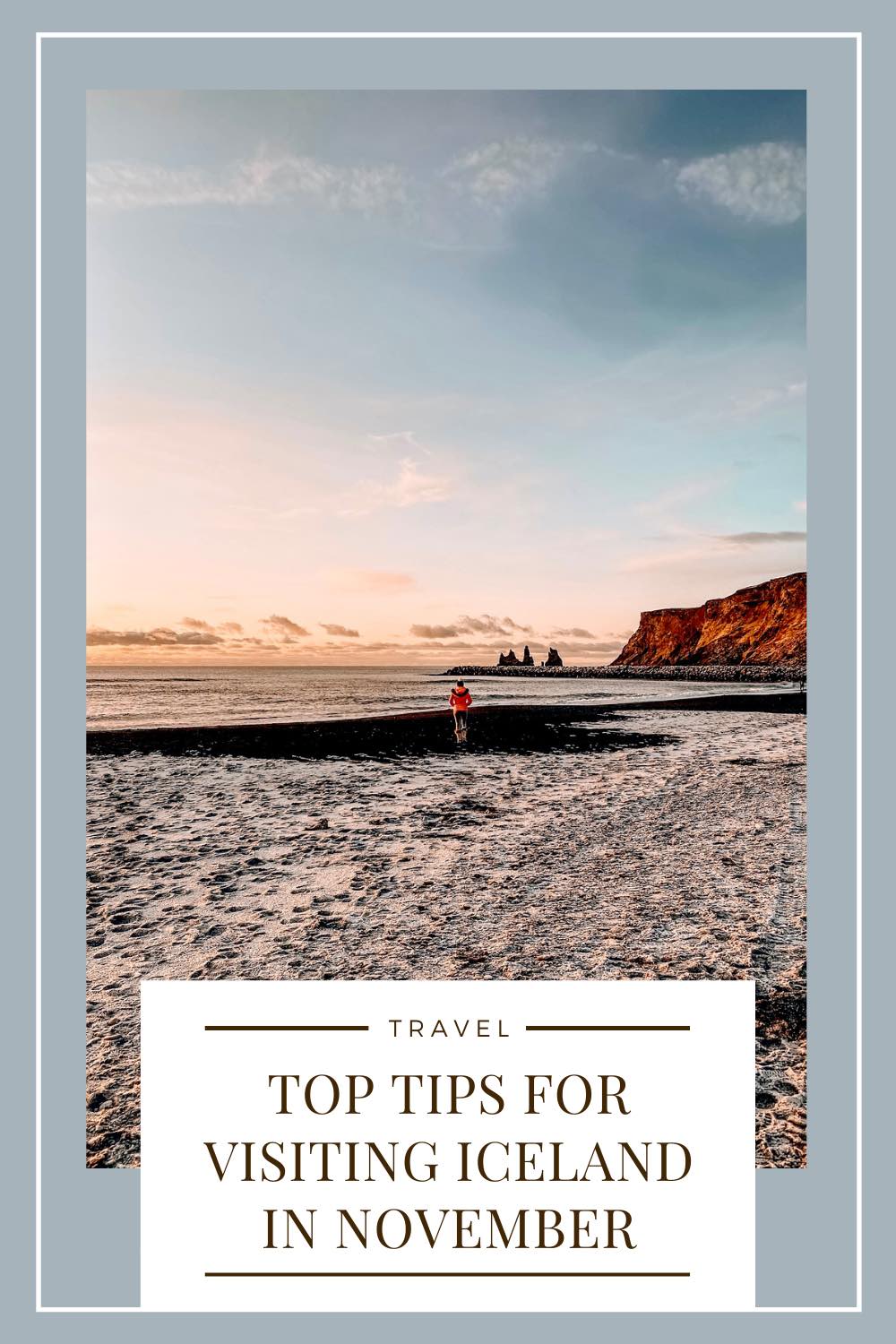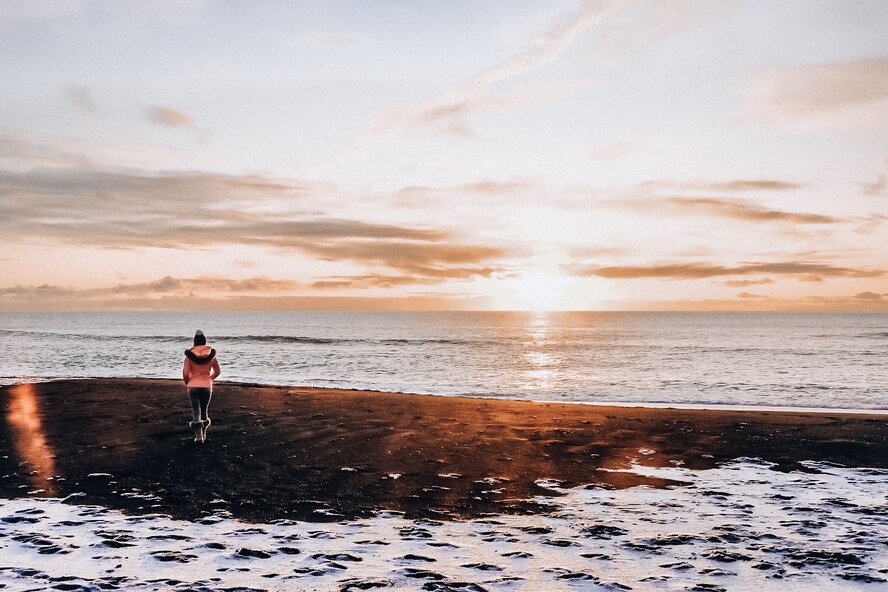
Are you thinking of planning a trip to Iceland in November? Iceland is a fantastic year-round destination, but one of my favourite times to visit is in November.
You’ll have a very different experience in Iceland depending on the time of year you visit. And there’s not necessarily a good or bad time to visit Iceland.
But it’s useful to understand the nuances of each season in Iceland, so you know what you’re in for.
I’d recommend first deciding on the type of trip you want, as this will determine the best time of year for you.
Do you want endless hours of daylight, drier weather and warmer temperatures? Or would you prefer the snowy landscapes and gorgeous sunsets of the winter months?
If you’re wondering whether to visit Iceland in November – or you’ve already booked your trip – I’ve previously spent November in Iceland and will share everything you need to know.
Is November a good time to visit Iceland?
In short, yes! November is a fantastic time to visit Iceland, especially if you’re after stunning snowy vistas and hours of ‘golden hour’ light.
Although there are less daylight hours, all day there was a gorgeous golden glow as the sun is so low in the sky – perfect for those of us into photography!
Plus, there are plenty of fun and unique places to visit and things to do during November.
From more relaxing activities, such as visiting the Blue Lagoon, to more thrilling adventures, such as caving and snowmobiling.
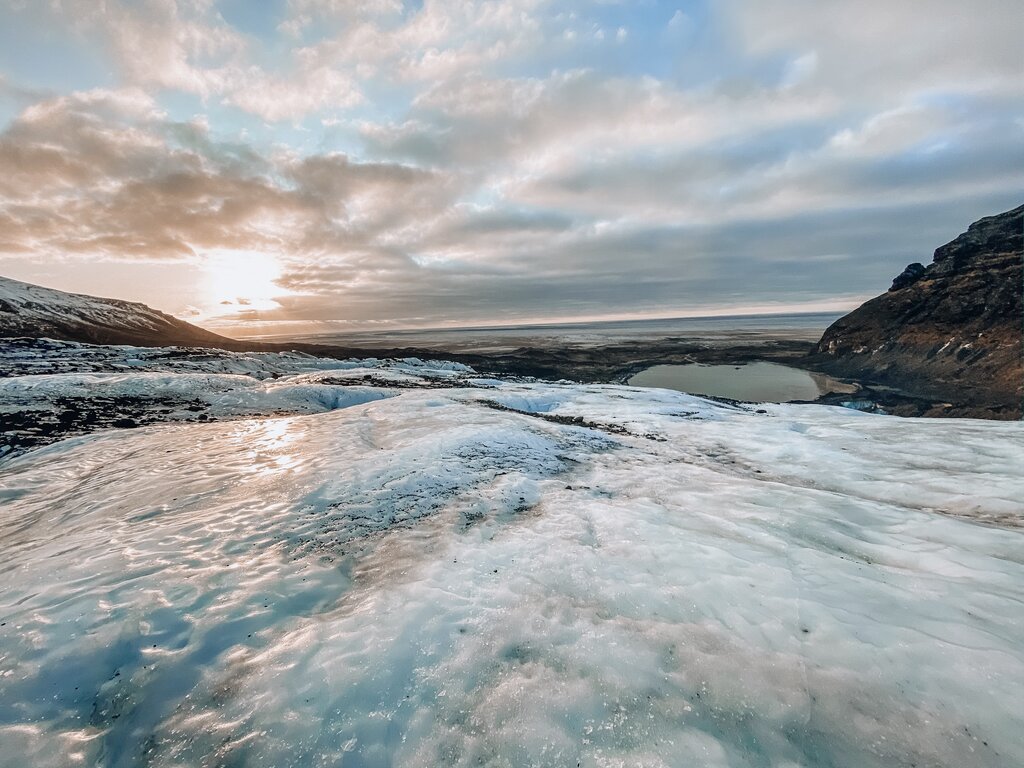
You’re also in with a great chance of seeing the Northern Lights in November – I was lucky enough to see them on my visit.
Of course there’s never a guarantee that you’ll see the magical green lights leaping across the sky. But it’s a big attraction for visitors to Iceland in the winter months.
What is the Iceland weather like in November?
The weather in Iceland throughout November is exactly what you’d expect from Iceland in the winter. It’s cold and icy.
This may not appeal to everyone but if you can stand the chilly outdoors then you can enjoy the amazing benefits of Iceland in November.
The average temperature in November is around 1°C (34°F). Add to that an arctic breeze and it can feel well below freezing.
There’s no getting around the fact that Iceland is really cold in November. But it needn’t be an issue. Trust me, if I can survive the cold then anyone can!
As long as you come prepared with appropriate thermals and clothing, you’ll be just fine.
How many daylight hours are there in Iceland in November?
This is an important point to note, as it can have a big effect on your itinerary. Iceland’s daylight hours are considerably shorter in the winter months.
These hours decrease pretty rapidly throughout November. In early November there are up to eight hours of daylight. By the end of the month, there are only about five hours.

Less daylight hours does give you less time to explore. You need to cram more into the day and ensure careful planning of your itinerary.
If you’re worried about the lower number of daylight hours, it may be best to visit in early November.
However, one of the great advantages of visiting Iceland in late November is that you get a beautiful ‘golden hour’ glow for the whole five hours.
As the sun never gets particularly high in the sky, the result is a constant sunrise / sunset all day. It’s absolutely beautiful and makes for the best photos. In fact, it’s arguably my favourite thing about visiting Iceland in November.
What clothing to wear when visiting Iceland in November?
As I mentioned, Iceland is excruciatingly cold in November. It therefore follows that good thermals and a very warm coat are compulsory items on your packing list.
I’d recommend bringing lots of layers, thick socks and waterproof outer layers. In terms of footwear, good hiking boots or snow boots are a must.
Don’t even think about wearing lightweight trainers! Warmth and waterproof are key here.

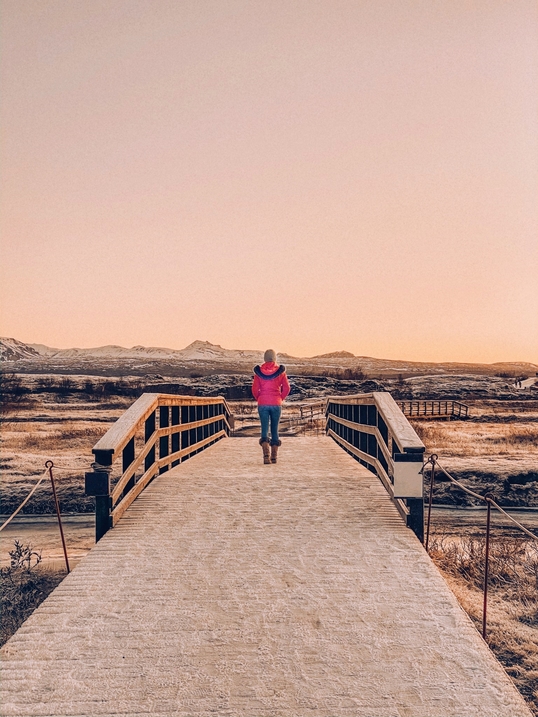
Iceland in November: packing list
For a concise list, here are my suggestions of what clothing to pack for a November trip to Iceland:
- Thermal base layers – top and bottom
- Fleeces & jumpers – layer with warm fleeces and jumpers
- Warm, waterproof coat – a ski jacket is a great option
- Good pair of gloves – bring glove liners too for extra warmth
- Thermal socks – keep your feet warm and toasty
- Wooly hat – any warm hat that keeps your head and ears insulated
- Scarf – useful for keeping your neck protected from the chilly winds
- Hiking boots or snow boots – there will be snow and ice to contend with
Things to do in Iceland in November
I was seriously impressed by the breadth of things to do in Iceland in November.
If you’re lucky to have sunny weather, then everywhere you visit is made even more beautiful by the sun’s golden glow reflecting off the snow and ice.
Here are my top picks for what to see in Iceland in November:
1. Tour the Golden Circle
Top tours to book:
- From Reykjavik: Golden Circle Full-Day Guided Trip
- Reykjavik: Golden Circle Full-Day Tour with Kerid Crater
- From Reykjavik: Golden Circle and Glacier Snowmobiling
The Golden Circle crops up a lot when researching a trip to Iceland. It’s a popular itinerary point because it’s so accessible from Reykjavik.
The Golden Circle is situated in southwest Iceland and consists of three locations: Þingvellir National Park, Geysir Geothermal Area, and Gullfoss waterfall.
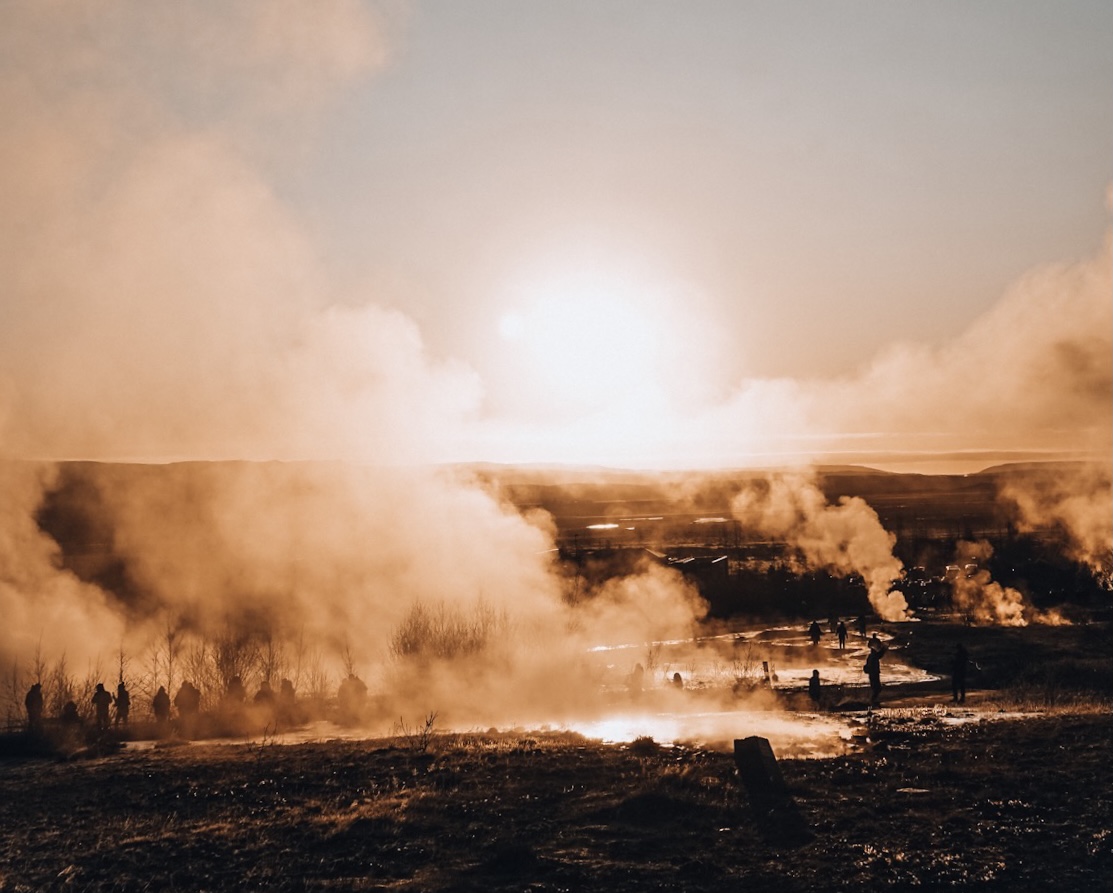
I was blown away by the beauty of this region, and November is a perfect time to visit the Golden Circle. The National Park will be flooded with golden sunlight, reflecting off the crystal clear iced over lakes.
Watch the geysers explode with the sun shining through the steam. Finally, gape at the scale of Gullfoss waterfall and, if you’re lucky with the weather like we were, spot the rainbows rising out of the water.
2. Explore the many caves
Top tours to book:
- South Iceland: Vatnajökull Glacier Blue Ice Cave Tour
- Húsafell: Into the Glacier Ice Cave Tour
- Skaftafell: Ice Cave Tour and Glacier Hike
There are caves of all shapes and sizes dotted across Iceland. Formed by numerous volcanic eruptions, the lava caves offer a hidden underworld of geological history.
You’ve probably seen pictures of the beautiful glacier caves in Iceland. These are the most popular caves due to their unique beauty.
Enter a world of bright blue walls and immense ice sculptures. Armed with crampons, a helmet, and a headtorch, wander around the caves with a guide and learn about their formation.
There are various caves available to explore – I’d recommend the Thrihnukagigur Cave, Raufarholshellir Cave, Gjabakkahellir Cave and Katla Ice Cave.
3. Relax at the Blue Lagoon
Top tours to book:
- From Reykjavik: Blue Lagoon Admission with Transfers
- From Reykjavík: Volcanoes and Blue Lagoon Day Trip
- Blue Lagoon: Retreat Spa Experience & Private Changing Suite
There are numerous geothermal hot springs across Iceland. One of the most well-known is the Blue Lagoon just outside Reykjavik.
The mineral-rich water offers numerous health benefits, from improving circulation to soothing skin conditions.
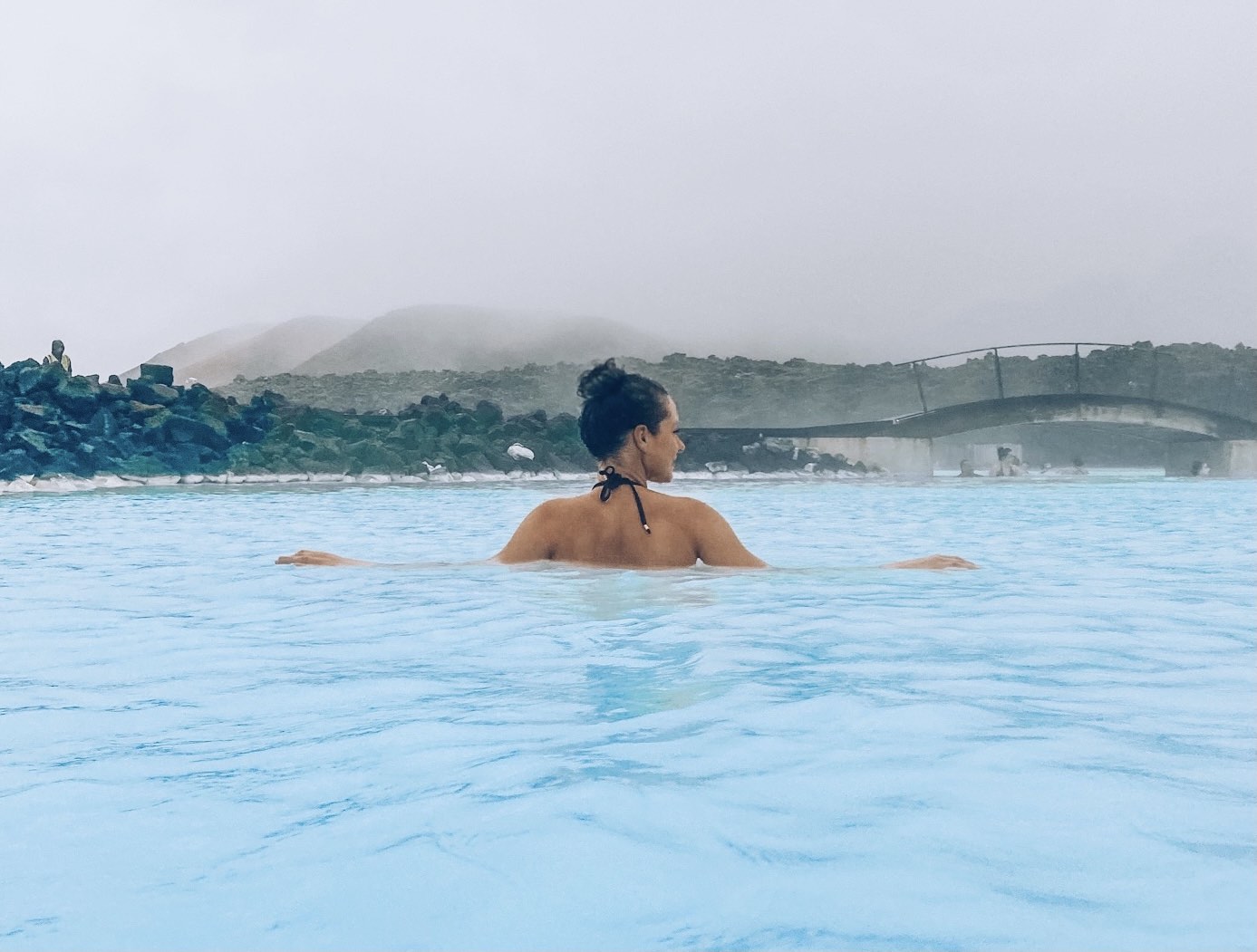
I had the most unforgettable day relaxing in the lagoon and taking in the beautiful surroundings.
Indulge in a free face mask, grab a drink from the swim-up bar, and get a neck massage from the powerful waterfall.
Be sure to check out my guide to visiting the Blue Lagoon before you go.
Insider travel tip: As it’s such a popular tourist spot, the downside is that it gets very busy. For a quieter option, I’d recommend trying the Secret Lagoon or Krauma.
4. Go snowmobiling
Top tours to book:
- From Reykjavik: Golden Circle and Glacier Snowmobiling
- Vik: Mýrdalsjökull Snowmobile Adventure
- From Reykjavik: Golden Circle and Glacier Snowmobile Tour
If you’re an adventure seeker like me, snowmobiling is an absolute must for your November Iceland itinerary.
Glide through the snowfields and soak up the captivating landscapes. You can even go snowmobiling over active volcanoes – an experience that is unique to Iceland.
If you’re a qualified driver and adult then you can drive the snowmobile yourself. Zoom over Iceland’s glaciers for a truly exhilarating experience.
5. Walk along the black beaches
Top tours to book:
- From Reykjavik: South of Iceland Full-Day Trip
- Iceland: Full-Day South Coast, Black Beach & Waterfalls Tour
- From Reykjavik: South Coast Tour & DC-3 Plane Wreck
There are a number of famous black beaches in Iceland. Seeing the waves lap up against the black sand while the sun sets in the background is a truly mesmersing experience and one I won’t forget in a hurry.
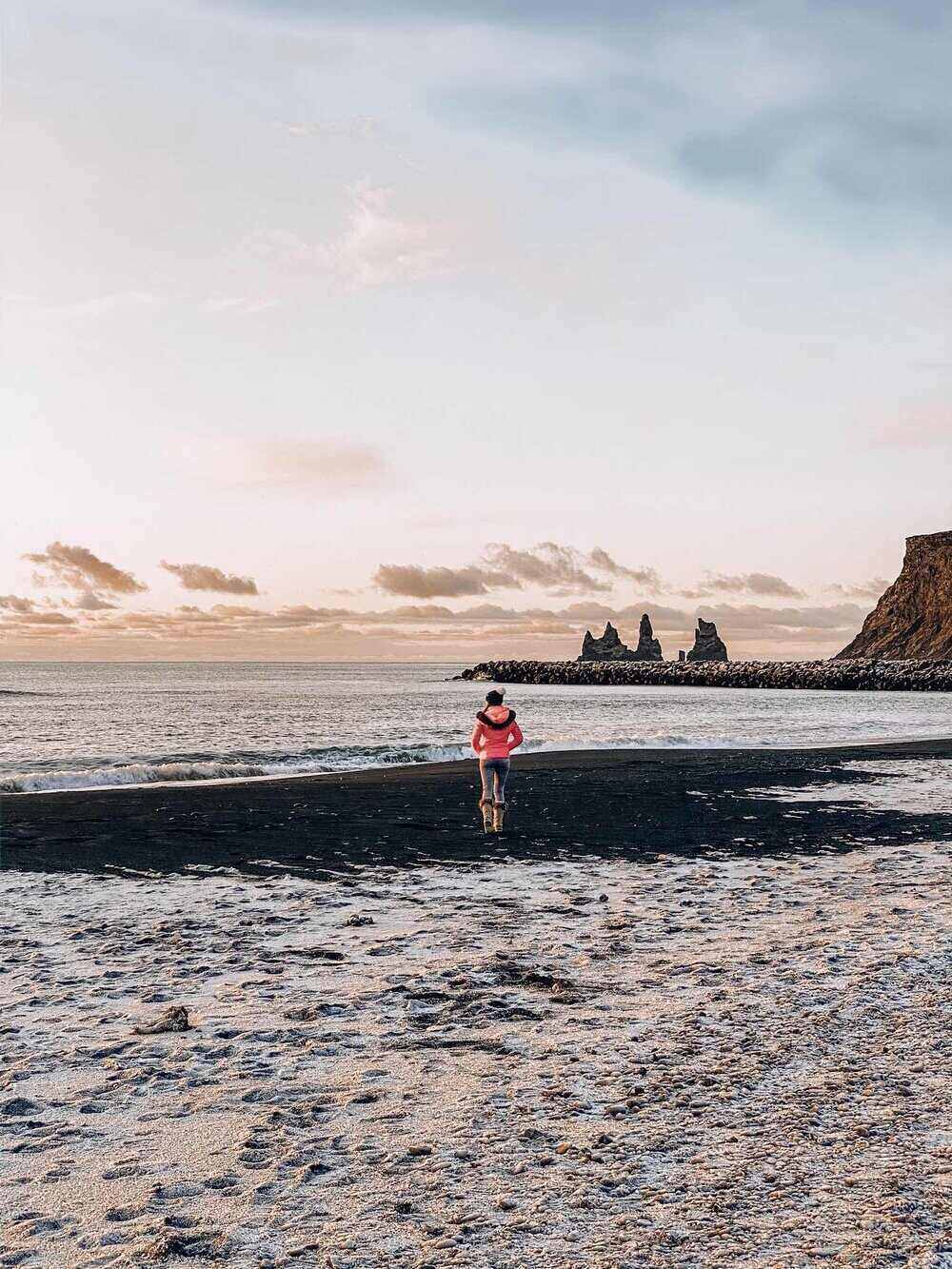

Many of the black sand beaches are located along the south coast of Iceland, so they are easily accessible.
Reynisfjara is probably the most popular black sand beach in Iceland. Diamond Beach is adorned with crystal clear glacier pieces.
While Solheimasandur is home to the recognisable plane wreck.
6. Try whale watching
Top tours to book:
- Húsavík: Whale Watching Tour with Guide
- Árskógssandur: Whale-Watching Boat Trip
- Húsavík: Big Whales and Puffin Island Speedboat Tour
Iceland is generally considered to be one of Europe’s top whale-watching destinations.
There is something incredibly special about watching the large majestic whales splash around in front of your eyes.
November is the end of the whale watching season, so you’ll be able to find a good tour. However, it’s worth bearing in mind that the trip will be very cold and wet, so dress appropriately.
Personally I suffer from terrible sea sickness, so it may be one you want to avoid if you’re the same as me!
7. Go surfing (yes, really)
I’m sure this isn’t the first activity that springs to mind when you think of Iceland in November.
But there is a growing community of surfers in Iceland and November is the best month to do this thrill-seeking water sport. November sees wind speeds picking up, along with the waves.
Although it is possible for newcomers to surf in Iceland, it’s more suited to experienced surfers. The one downside is that it’s pretty chilly. So thick wetsuits, hoods and gloves are a must!
Is November a good time to see the Northern Lights in Iceland?
November is a great time to see the Northern Lights in Iceland. Given the limited daylight hours and long nights, there are plenty of opportunities to witness the majestic display.
It does take a good degree of luck though, so there is never a guarantee of seeing the Northern Lights.
I therefore don’t recommend planning your trip around seeing them. Going on a tour with a guide can increase your chances of seeing them, but you don’t need to go on a tour.
Simply stay on the lookout throughout the evening, particularly if there are clear skies. One of the hotels I stayed at asked if we wanted to be woken up during the night if they made an appearance – this is how I ended up seeing them.
Where to stay in Iceland in November
There are a number of unforgettable hotels across Iceland, offering impeccable Scandi design and luxury amenities.
Read my guide to the best luxury hotels in Iceland – or discover my top picks:
1. The Retreat at Blue Lagoon
Nestled amidst Iceland’s volcanic landscape, The Retreat at Blue Lagoon boasts a Nordic-inspired restaurant, a state-of-the-art wellness center, and panoramic views.
If you’re seeking a sanctuary from life’s hustle, The Retreat Hotel offers a serene escape within one of the planet’s most mesmerising natural wonders.
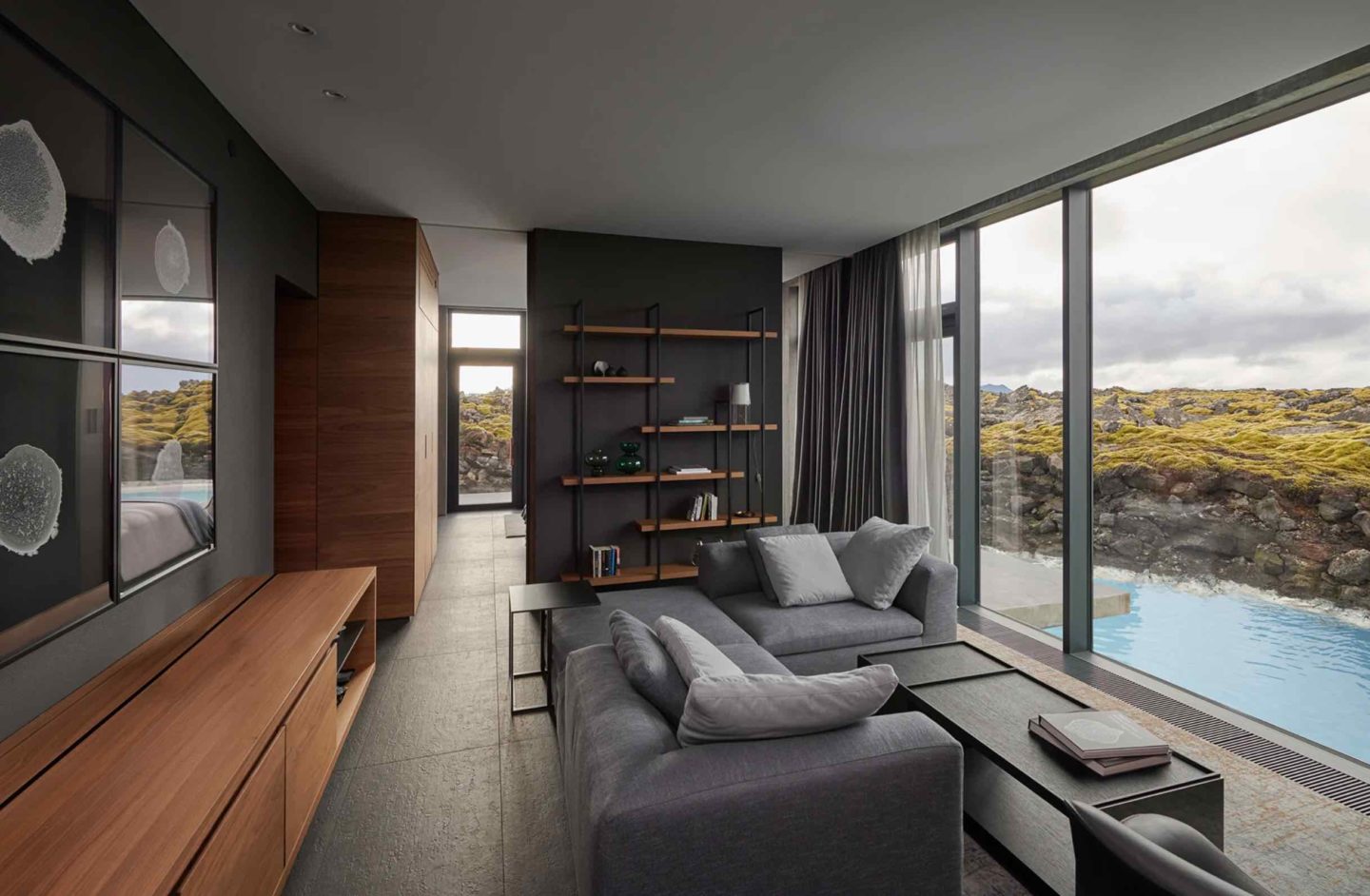
From your chic room, indulge in views of the tranquil blue lagoon waters. At Moss restaurant, savour delectable meals with a backdrop of majestic mountains.
The Retreat seamlessly combines Michelin-starred cuisine, exclusive access to the Retreat Spa and Blue Lagoon, and sophisticated lodgings with unmatched vistas.
2. UMI Hotel
Situated about 100 miles from Reykjavik in southern Iceland, UMI Hotel is an unforgettable four-star hotel.
Its modern, understated architectural design contrasts beautifully with the volcanic mountain backdrop, making it a contemporary gem in the midst of nature.
On one side, the hotel is flanked by craggy granite ridges. On the other, the iconic dark sands that are synonymous with Iceland’s southern coast beckon.
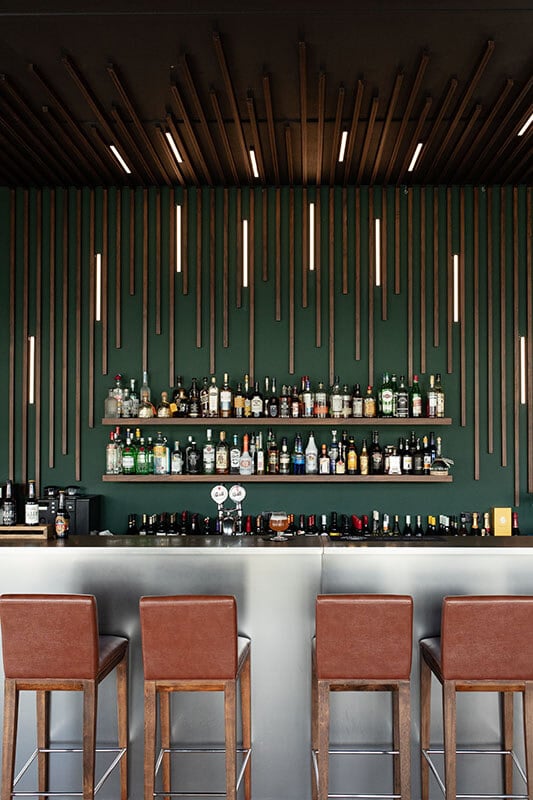

The hotel offers a view of a frosty panorama, from cascading glacial falls and snow-capped peaks to the charming presence of local puffins.
With only 28 rooms, I love that this family-operated establishment exudes warmth and cosiness.
The rooms, adorned with a sleek design, are accentuated with elements of hygge — featuring natural wood finishes and touch-inviting fabrics.
At UMI Hotel’s restaurant, guests can savour traditional Icelandic delicacies. Later, unwind at the bar, enjoying a drink and a view of the brilliant night sky.
3. The Reykjavik EDITION
Nestled in the vibrant pulse of Iceland’s capital, The Reykjavik EDITION redefines luxury hospitality.
As an urban oasis, it marries contemporary design with the city’s rich cultural heritage, offering guests a perfect blend of style and substance.
Its architecture and interiors reflect the pristine and ethereal beauty of the Icelandic landscape, while still echoing the cosmopolitan spirit of Reykjavik.
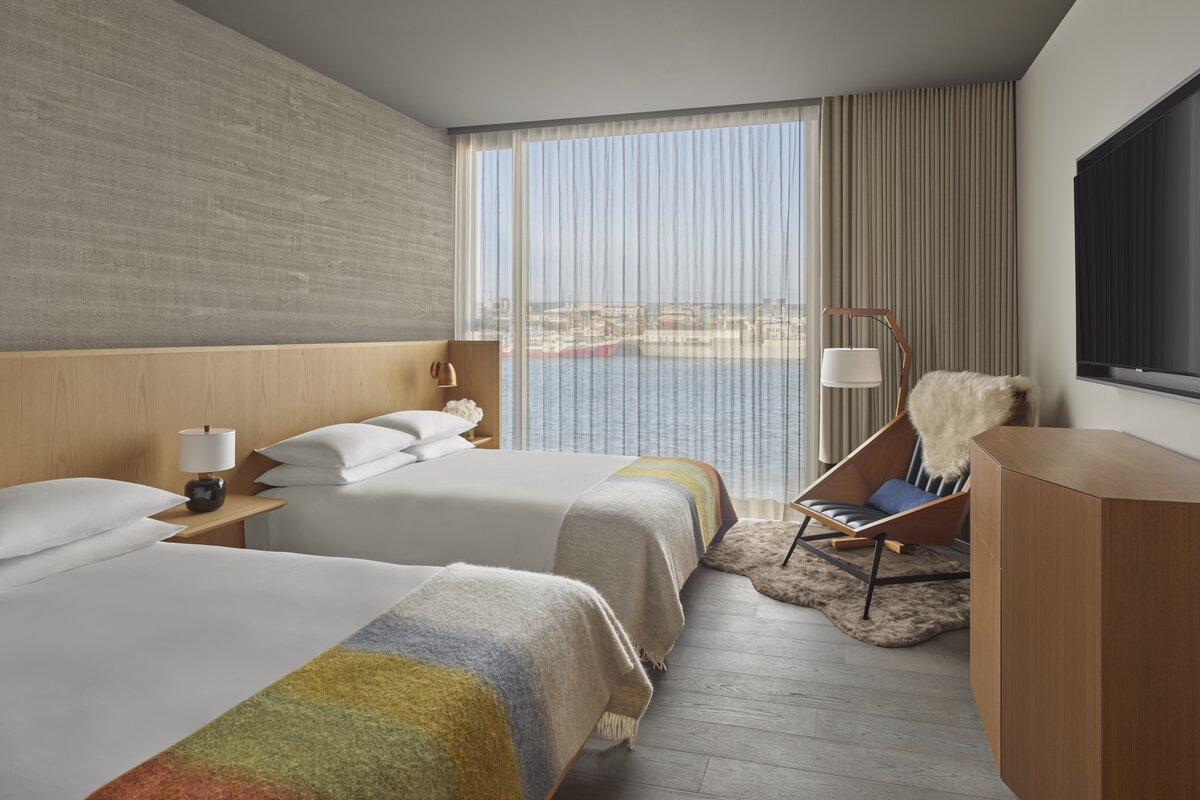
With world-class amenities, each room offers unparalleled comfort, blending minimalist design with cosy warmth, inspired by the Icelandic concept of ‘hygge’.
The in-house Tides restaurant tantalises with authentic Icelandic flavours, with an alfresco option that offers unforgettable views of the waterfront and city.
All in all, November is a wonderful time of year to visit Iceland. As long as you’re prepared for the cold, there is plenty to see and do.
If you ahve any questions or recommendations for visiting Iceland in November, let me know in the comments or get in touch on social media.
Discover more Iceland content to help you plan your trip:
- Iceland travel guide
- Guide to visiting the Blue Lagoon
- Beautiful black beaches of Iceland
- Incredible luxury hotels in Iceland
- 7 amazing Michelin restaurants in Iceland
